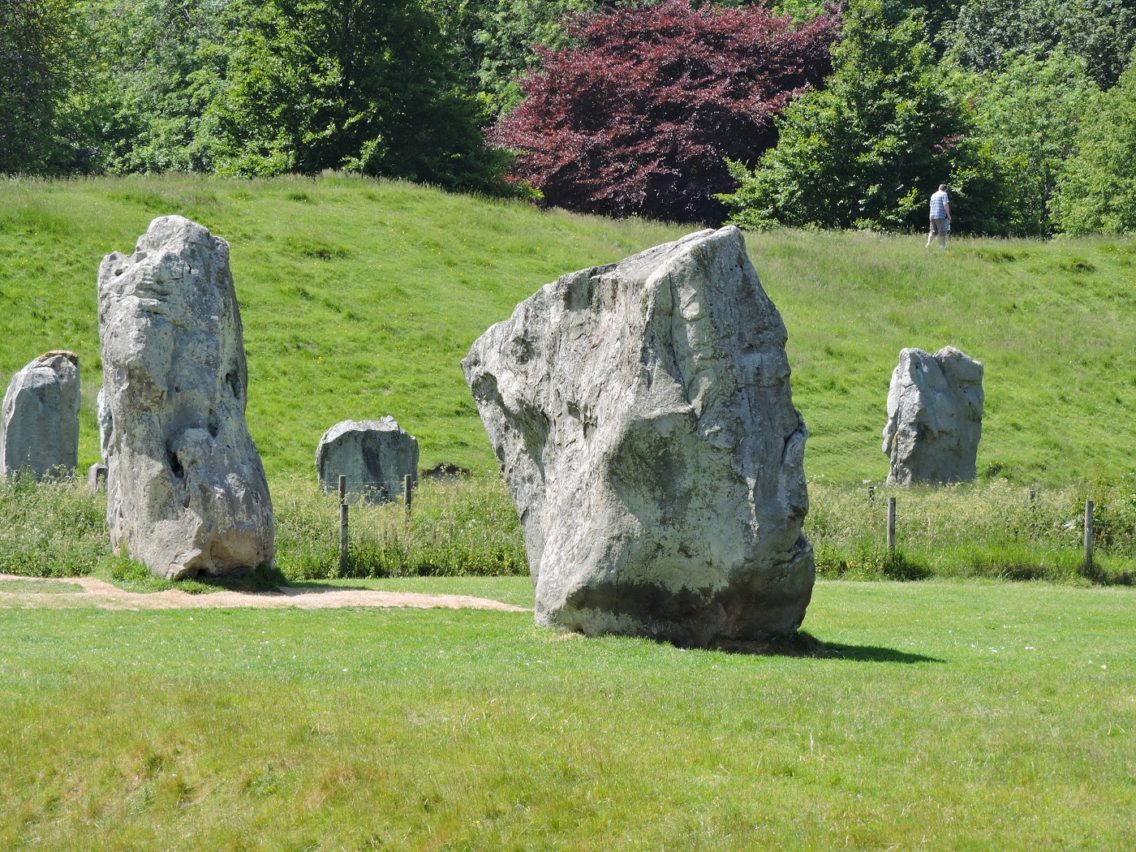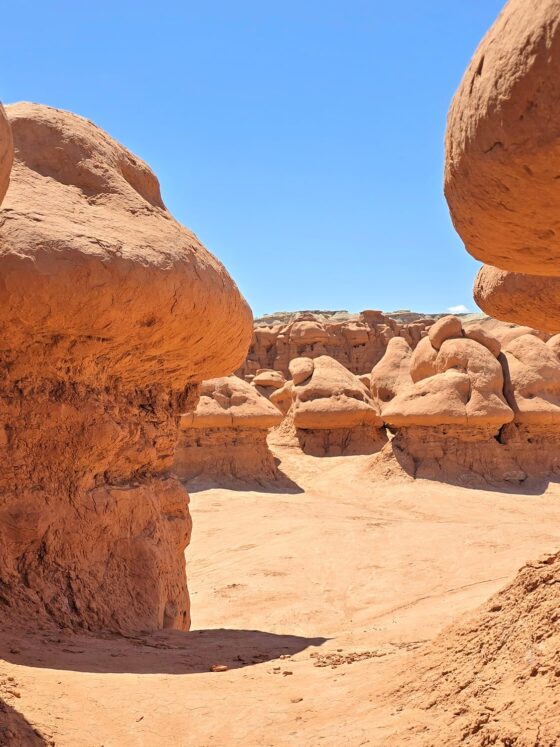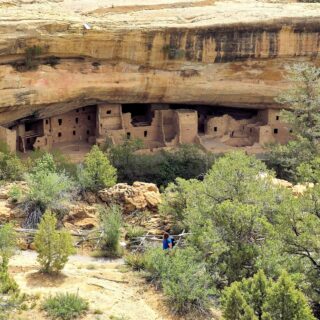Avebury, located a little less than two hours from London and under an hour’s drive from Bath, is a neolithic henge with stone circles believed to have been built roughly around 2850 BC. Unlike the now blocked off Stonehenge one can still get up close to the stones at Avebury. The stones however are a lot more spread out and less architecturally impressive than those at Stonehenge.
Because they are so spread out it’s easy to underestimate the amount of time needed to visit here; it also makes it a little confusing and the lack of signage doesn’t help. While it’s nice to be able to get right up next to the stones it’s difficult trying to figure out what you’re looking at. While to some extent it’s obvious, I’m looking at a rock and some sheep and it’s very pretty, the overall configuration and alignment is much less obvious. Apparently within the henge (the henge being the ring shaped earthen enclosure with a mounded bank and internal ditch) is the largest stone circle in Britain, which originally had around 100 stones. There are also two smaller stone circles within the large one. However, given how many of the stones are missing, how spread out they are, and that several houses and streets cut through the middle, this won’t exactly be what you see when visiting.
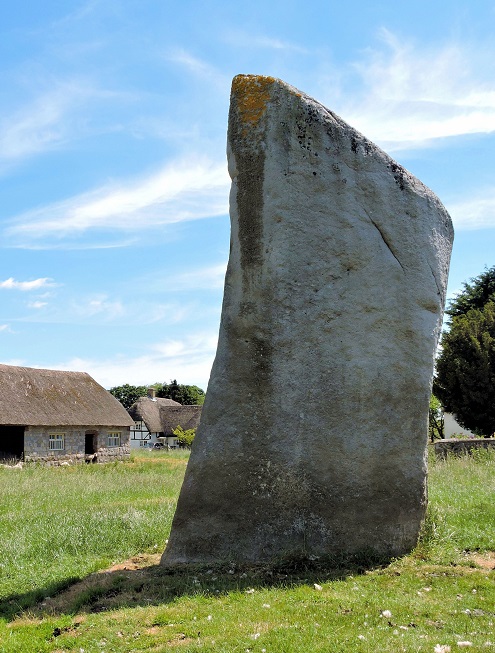
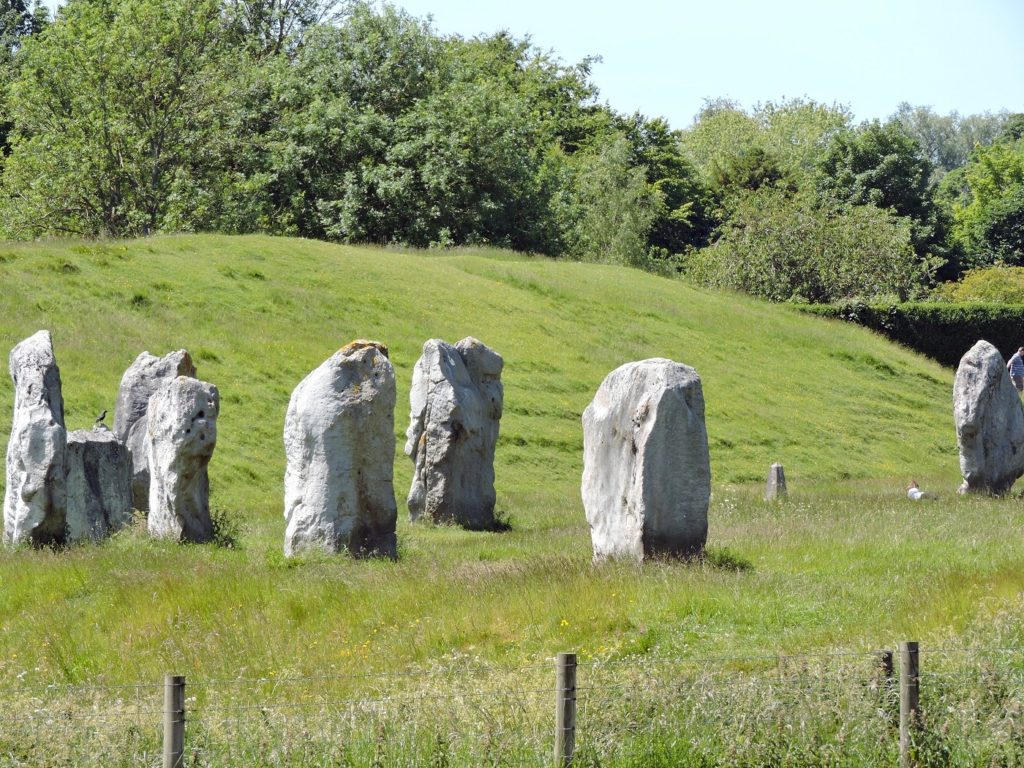
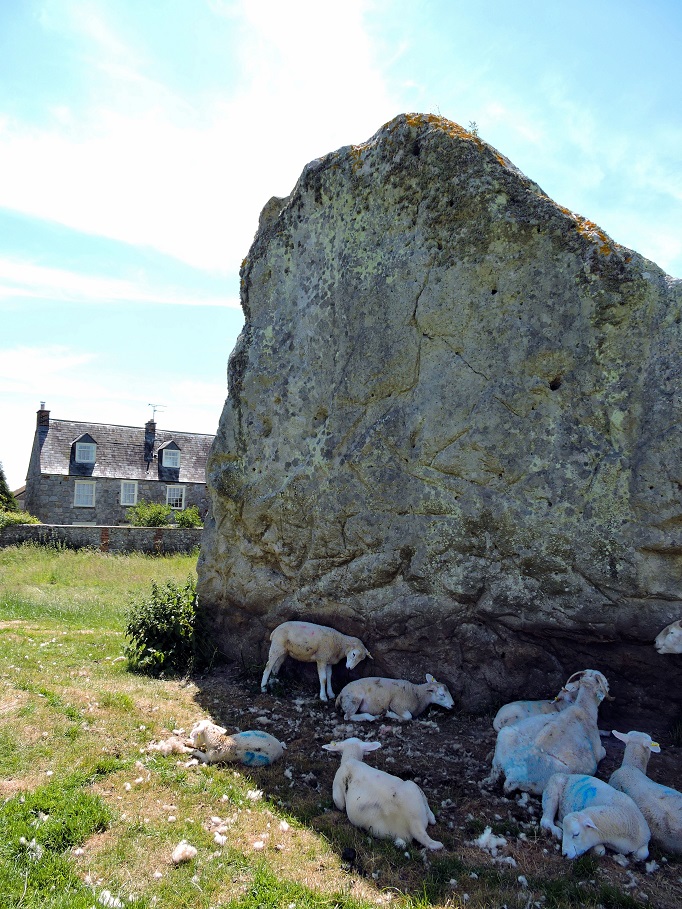
Avebury Museum
The Alexander Keiller Museum is located just outside the henge and should be a helpful tool when trying to conceptualize and understand the Avebury henge; and also the surrounding nearby area because the Avebury henge isn’t the only thing to see here (another reason to make sure you give yourself plenty of time). There are several other interesting sites considered part of the Avebury World Heritage Site that really make this place extra special and fascinating, (and also a little more confusing).
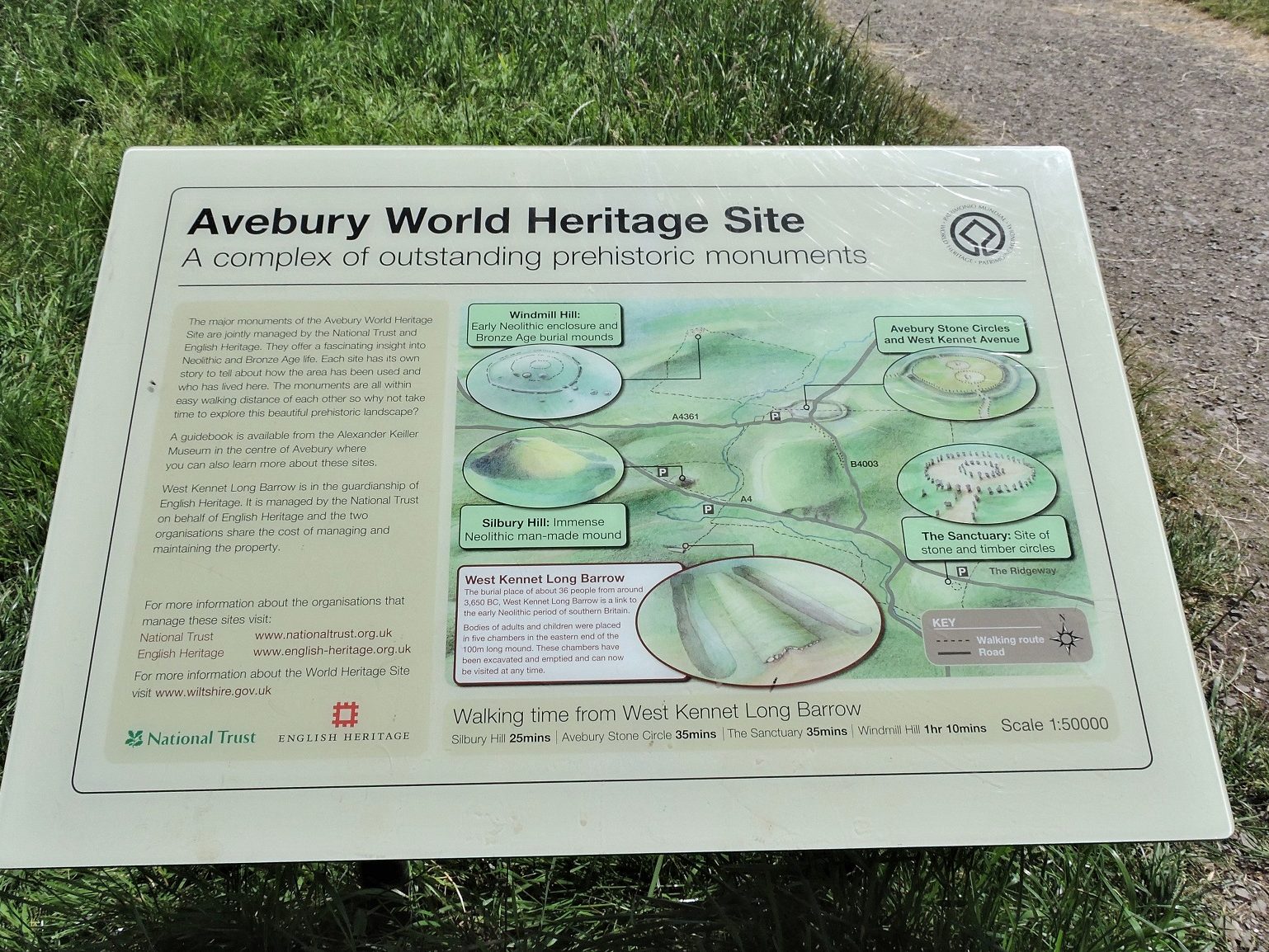
To start with there is the West Kennet Avenue, which consists of stone pairs that create a walkway of sorts (although here as well many stones are missing) that leads from Avebury henge to a place now called the Sanctuary. So, when you’re standing inside the henge and you’re trying to figure out where the circle of stones are exactly and you see some stones in the distance and think to yourself, What? Those can’t be part of any circle? They’re probably part of the West Kennet Avenue, leading to the Sanctuary. The Sanctuary is another place one can visit, unfortunately there isn’t much to see as it was destroyed by a farmer in the 18th century. Now there are only small concrete blocks to show the locations where large stones used to be.
West Kennet Long Barrow
A really interesting, fun, and not to be missed site in this vicinity is the West Kennet Long Barrow, a Neolithic tomb believed to be built around 3650 BC. When it was first excavated, grave goods and the cremations and partial remains of at least 46 people were found inside. It’s possible for visitors to enter inside to view and appreciate the architectural construction, which is really cool.
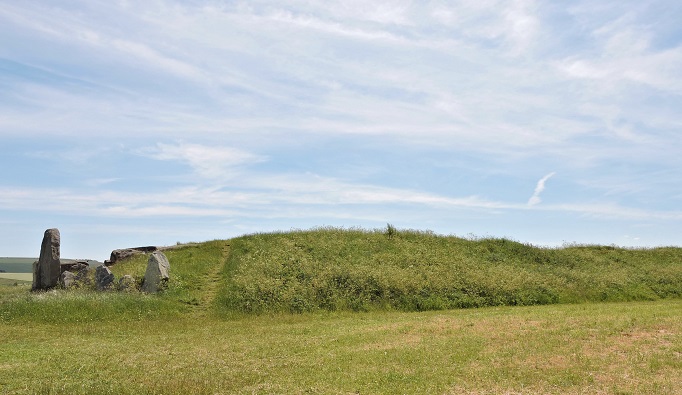
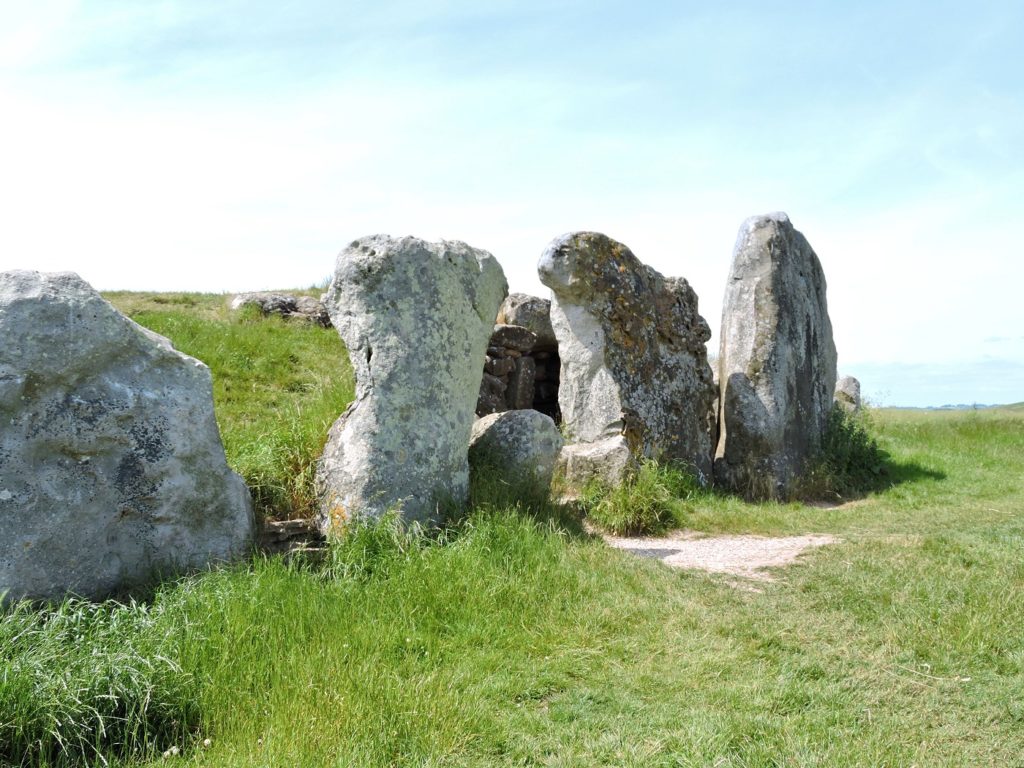

Silbury Hill
From the Long Barrow you can view the mysterious Silbury Hill, (nobody knows what it was built for) which is just across the roadway from the tomb. To learn more about the sites at Avebury one can visit english-heritage.org.uk


